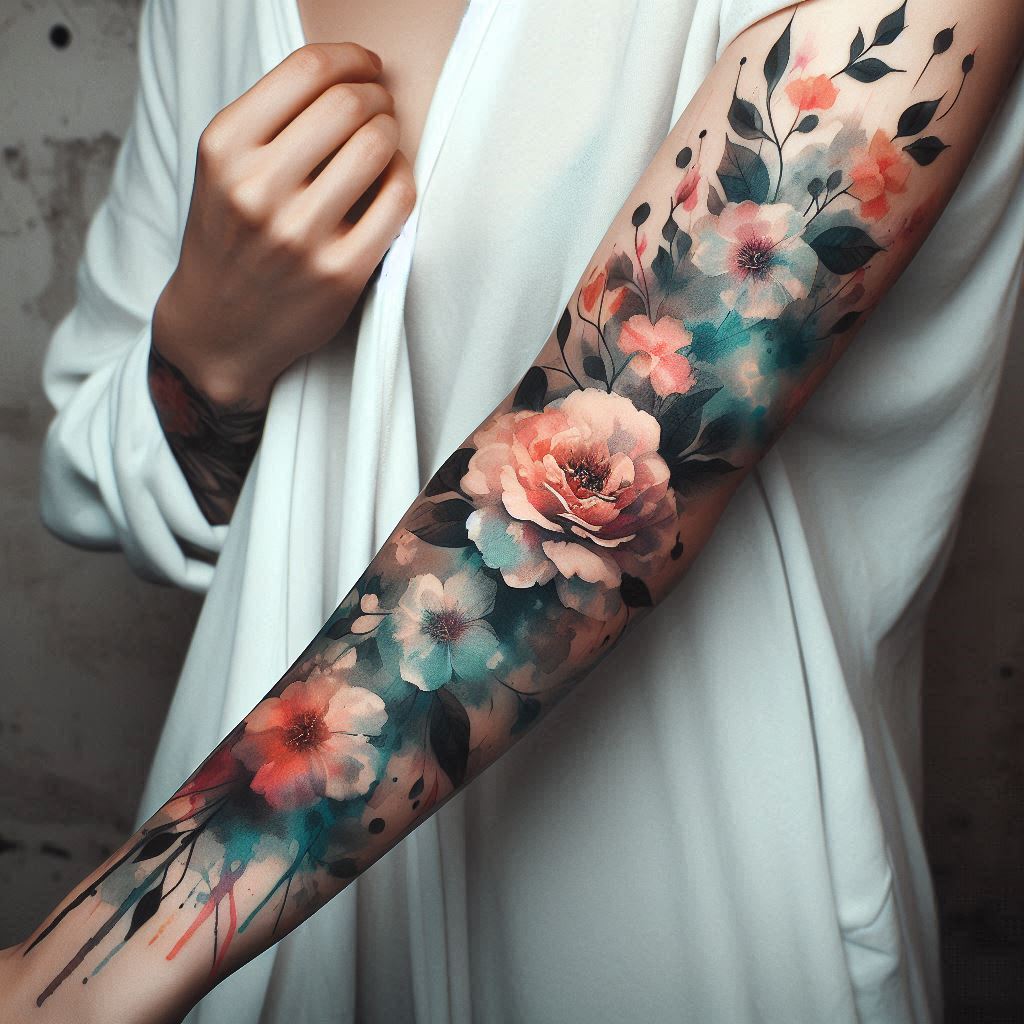Origins of the Style
Watercolor tattoos are a seductive shift from classic ink designs. They capture the soft brushstrokes and ethereal textures of watercolor artwork—faded hues, gentle gradient, and color that seems to explode on the body like paint exploding on canvas.
How They Differ from Traditional Tattoos
Unlike traditional tattoos, the watercolor tattoos may lose the typical heavy lines. Instead, they use delicate color gradation and soft diffusing to spring to life with a design.
Why Are Watercolor Tattoos So Popular?

Cultural Aesthetic Shifts
Watercolor tattoos are strong in times when individuality is reigning supreme. They capture expression, freedom, and nonconformity to strict convention.
The Rise of Visual Storytelling
Something beyond simple ornament, these paintings tell stories—impressionistic, intimate ones. Social media have served to hurry their popularity by calling attention to their visual uniqueness.
In What Way Does the Technique Differ from Classical Tattooing?
Brushstroke Effects and Blending
Artists use layering and thinning processes to replicate brush strokes. Ink is put down in broad, sweeping motions that fade in and out in measured imprecision.
The Use of Outlines—or Lack of One
There is a calculated pandemonium to the lack of outlines. Forms must be indicated by shading alone, and that takes a meticulous hand and good artistic eye.
Is Watercolor Tattoo Art More Demanding in Terms of Skill for Tattooists?
Artistic Perfection and Technical Skill
It is no trivial feat to attain softness through the use of needles. There must be a firm understanding of color theory and how pigments age in flesh.
The Learning Curve of the Tattooist
The style calls for an artist’s eye and a technician’s hand. Years of refinement and continued experimentation are required to get proficient.
What are the most usual motifs used in Watercolor tattoos?
Designs from Nature
Flower, animal, and landscape nature motifs are typical, composed with soft, almost-surreal colors.
Abstract Principles and Minimalism
Geometric patterns, ink splatters, and minimalist shapes that evoke emotion rather than detail are characteristic of this style.
Are Watercolor Tattoos Less Permanent Than Traditional Ones?
Pigment Longevity
Because the pigments are more diffuse and softer, they appear to fade sooner—especially on exposed areas.
Factors That Influence Fading
Quality of ink, type of skin, location, and aftercare dictate longevity. With proper care, they can maintain their beauty for years.
Does Placement Matter for Watercolor Tattoos?
High-Friction Areas to Steer Clear Of
Fingers, elbows, and feet can result in blurring or fading of the pigments prematurely.
Ideal Places for Longevity
Less-accessed, flat areas like the upper back, thighs, or arms hold up better to detail and color.
Does the Level of Pain Differ for Watercolor Techniques?
Depth of Layering and Shading
Watercolor tattoos can take several passes to create depth and gradients, which can increase sensitivity.
Skin Type and Personal Sensitivity
Pain is individual and area-specific. Technique is a factor, but personal pain tolerance is also crucial.
What Do You Need to Know Before Getting a Watercolor Tattoo?
Getting a Specialist
Not all tattooists can get away with this style. Look for portfolios of genuine watercolor work.
Clarifying Your Design Intentions
Be definite in your vision. A good artist will direct it towards a long-term outcome.
How Do You Keep a Watercolor Tattoo Looking Vibrant?
Daily Skincare Routine
Use fragrance-free moisturizers and keep your tattoo moist to prevent fading.
Why Sun Protection Is Important
Pigments can lose their shine in no time when exposed to UV light. Daily application of sunscreen SPF is essential.
How Does Skin Tone Influence Watercolor Tattoos?
Visibility of Color and Contrast
Colors react variously based on the undertone of your skin. Pastels suit lighter tones; deep tones prefer saturated colors.
Undertone Palette Adjustment
A skilled artist adjusts the palette to enhance visibility and maintain balance.
Are Touch-Ups More Common for Watercolor Designs?
Why and When You’ll Need Them
Touch-ups help maintain clarity and vibrancy over time. Most artists suggest periodic updates.
Costs and Frequency
Depending on fading and design, touch-ups every few years are the norm. Prices depend on the artist.